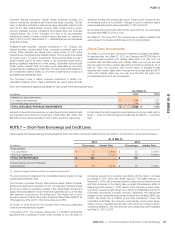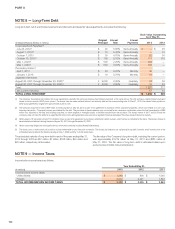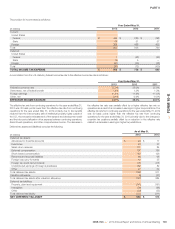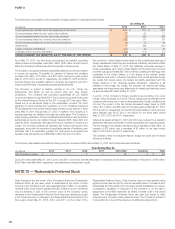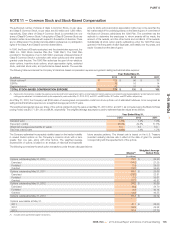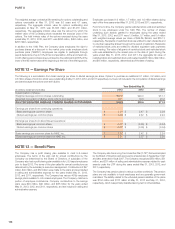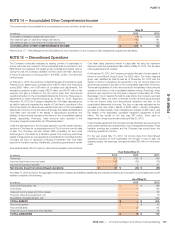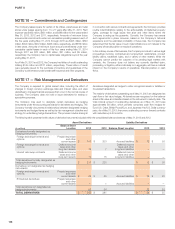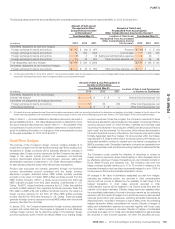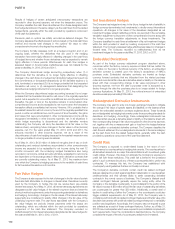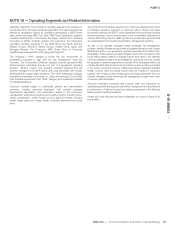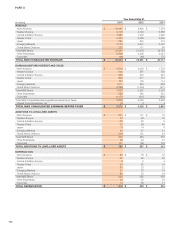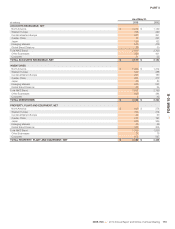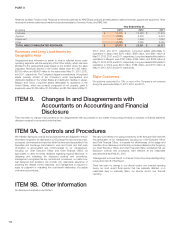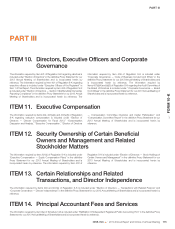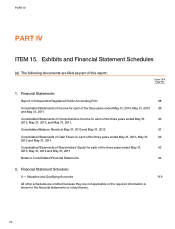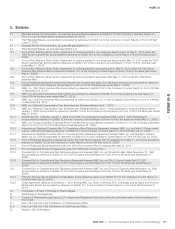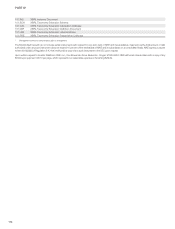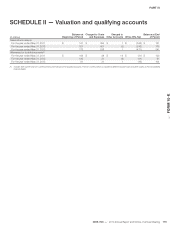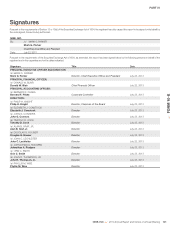Nike 2013 Annual Report Download - page 66
Download and view the complete annual report
Please find page 66 of the 2013 Nike annual report below. You can navigate through the pages in the report by either clicking on the pages listed below, or by using the keyword search tool below to find specific information within the annual report.
PART II
NOTE 18 — Operating Segments and Related Information
Operating Segments. The Company’s operating segments are evidence of
the structure of the Company’s internal organization. The major segments are
defined by geographic regions for operations participating in NIKE Brand
sales activity excluding NIKE Golf. Each NIKE Brand geographic segment
operates predominantly in one industry: the design, development, marketing
and selling of athletic footwear, apparel, and equipment. The Company’s
reportable operating segments for the NIKE Brand are: North America,
Western Europe, Central & Eastern Europe, Greater China, Japan, and
Emerging Markets. The Company’s NIKE Brand Direct to Consumer
operations are managed within each geographic segment.
The Company’s “Other” category is broken into two components for
presentation purposes to align with the way management views the
Company. The “Global Brand Divisions” category primarily represents NIKE
Brand licensing businesses that are not part of a geographic operating
segment, demand creation and operating overhead expenses that are
centrally managed for the NIKE Brand, and costs associated with product
development and supply chain operations. The “Other Businesses” category
consists of the activities of Converse Inc., Hurley International LLC, and NIKE
Golf. Activities represented in the “Other” category are considered immaterial
for individual disclosure.
Corporate consists largely of unallocated general and administrative
expenses, including expenses associated with centrally managed
departments, depreciation and amortization related to the Company’s
headquarters, unallocated insurance and benefit programs, including stock-
based compensation, certain foreign currency gains and losses, including
certain hedge gains and losses, certain corporate eliminations and other
items.
The primary financial measure used by the Company to evaluate performance
of individual operating segments is earnings before interest and taxes
(commonly referred to as “EBIT”), which represents net income before interest
(income) expense, net and income taxes in the consolidated statements of
income. Reconciling items for EBIT represent corporate expense items that
are not allocated to the operating segments for management reporting.
As part of our centrally managed foreign exchange risk management
program, standard foreign currency rates are assigned twice per year to each
NIKE Brand entity in our geographic operating segments and certain Other
Businesses. These rates are set approximately nine months in advance of the
future selling season based on average market spot rates in the calendar
month preceding the date they are established. Inventories and cost of sales
for geographic operating segments and certain Other Businesses reflect use
of these standard rates to record non-functional currency product purchases
in the entity’s functional currency. Differences between assigned standard
foreign currency rates and actual market rates are included in Corporate,
together with foreign currency hedge gains and losses generated from our
centrally managed foreign exchange risk management program and other
conversion gains and losses.
Accounts receivable, inventories and property, plant and equipment for
operating segments are regularly reviewed by management and are therefore
provided below. Additions to long-lived assets as presented in the following
table represent capital expenditures.
Certain prior year amounts have been reclassified to conform to fiscal 2013
presentation.
NIKE, INC. 2013 Annual Report and Notice of Annual Meeting 111
FORM 10-K


